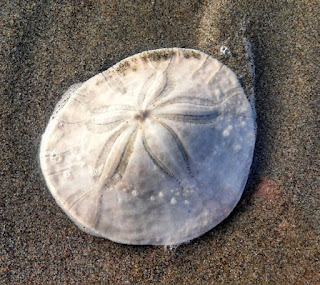Sand Dollars, Sea and Shore
Lisa Myworries, Winkie Guard supervisor at the Darwin Ranch up near Deception Pass, needed some time away. She went to the ocean and brought back sea shells (some purchased from Sara's shop at the seashore). In the mix were those things often called sand dollars.
Many things on the beach are actually discarded by their former owners, some are even skeletons. A diver may see a colorful living sand dollar and not make the connection with that white thing on the shore. They actually give testimony of the Creator's ingenuity.
 |
| Sand dollar via PxHere |
According to researchers, there are 150 different extant sand dollar species in the world. They are found in the intertidal areas of oceans, from the cold Alaskan Pacific to the warm waters of Indonesia.1 According to the Washington state Department of Ecology, in other countries sand dollars are also referred to as sand-cakes, sea cookies, and even biscuit-urchins. [And snapper biscuits in New Zealand. -CBB] Sand dollars (genus Dendratster) are invertebrates (without a backbone), belonging to the order Clypeasteroida. The iconic star or flower shape on the sand dollar is called the petalidium. “The ‘pedals’ are made up of many small holes, used for respiration.” However, this shape is not as visible on live sand dollars.
You shore can read the entire article at "Sand Dollar Secrets."